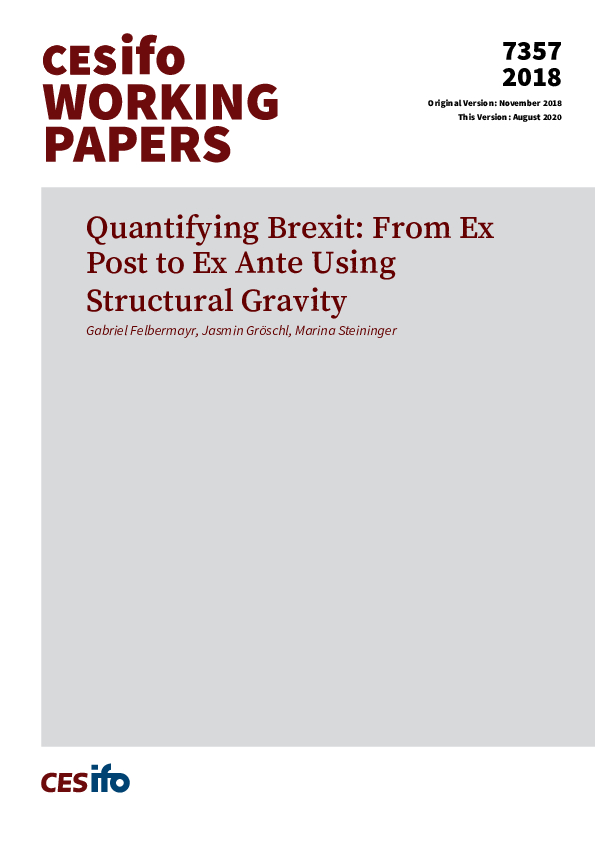Quantifying Brexit: From Ex Post to Ex Ante Using Structural Gravity
CESifo, Munich, 2018
CESifo Working Paper No. 7357

Exploiting changes in the geography of economic integration in Europe, we quantify the economic consequences of Brexit using a quantitative general equilibrium model that captures inter- and intranational production networks. We isolate three important layers of EU integration for the UK: First, we distinguish directional treatment heterogeneity in the relation between the UK and the EU27 economies. Second, we disentangle tariff and non-tariff barriers in EU agreements affecting the UK, which show differential effects on the gains from trade. Third, next to European integration agreements, we consider fiscal transfers, which affect the terms-of-trade of countries. The analysis reveals that directional effects matter for the size and distribution of the welfare effects from Brexit. Neglecting asymmetries in EU-UK relations overestimates the costs from Brexit by up to 40%. The welfare costs of Brexit are higher in the UK than in most other EU counties. However, heterogeneity tends to attenuate overall costs while giving rise to substantial heterogeneity between EU27 members and between sectors. We introduce a scenario that could shift the bargaining power and eliminates asymmetries in the costs from Brexit as soon as the UK fully liberalizes its market.
Trade Policy
Empirical and Theoretical Methods